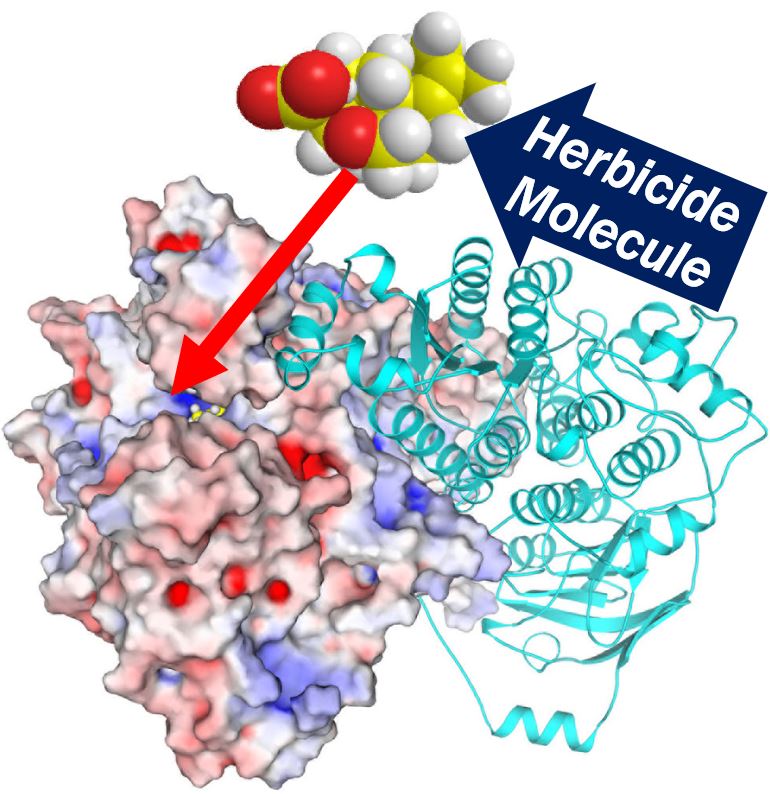Scientists have discovered a natural product that may lead to a new class of commercial herbicide. The researchers, from UCLA Samueli School of Engineering, used a bioinformatics approach to uncover the commercial herbicide. They believe we could also use their approach to find new medications. Specifically, anti-cancer medications and antibiotics.
Our gardens are highly-competitive environments. Microorganisms in the soil, for example, need space in which to grow. Plants also fight for space for the same reason.
To gain access to that space, a microbe could produce and use chemicals that kill its rivals. Specifically, its plant competitors.
However, the microbe does not want to kill itself, i.e., it also needs immunity from its own toxins (poisons).

New commercial herbicide
The researchers examined the genes that create the protective shields of microorganisms. By doing this, they subsequently discovered a new and potentially extremely effective type of commercial herbicide, i.e., weed killer.
It has been over three decades since a new class of commercial herbicide has come onto the market. This finding may mean the creation of a new class of weed killer.
This is an important outcome, the scientists explain, because weeds in the current herbicide regime, continue developing resistance. In other words, current commercial herbicides gradually become less effective at killing off weeds.
Combining data science and genomics
By combining genomics and data science, the scientists found the new commercial herbicide. They searched the genes of thousands of different fungi. They were specifically looking for one that could provide immunity against fungal poisons.
We call this approach ‘resistance gene-directed genome mining.’
Co-principal investigator Prof. Yi Tang and colleagues wrote about their study and findings in the prestigious journal Nature (citation below).
The authors explained that scientists could also use their genomics-driven approach to create antibiotics and cancer-fighting medications.
From commercial herbicide to medications
Prof. Tang said:
“Microorganisms are very smart at protecting themselves from the potent molecules they make to kill their enemies.”
“The presence of these resistance genes provides a window into the functions of the molecules, and can allow us to discover these molecules and apply them to diverse applications in human health and agriculture.”
It’s all in the microorganism’s genes
Let’s suppose we find a resistance gene that protects a microorganism from an anti-bacterial product. That microorganism most likely also has genes that make the same anti-bacterial compound.
Finding that gene could lead to the discovery of some interesting antibacterial medications.
The new weed killer acts by inhibiting an enzyme function that a plant needs to survive. The enzyme is a key biological catalyst in a vital metabolic pathway that makes essential amino acids.
If you disrupt this pathway, the plant subsequently perishes.
This pathway exists neither in humans nor mammals. This is why it has been a common target in commercial herbicide R&D. R&D stands for research and development.
Any commercial product that uses it would require more research and regulatory approval.
A target in the plant
Co-principal investigator, Prof. Steven Jacobsen, said:
“An exciting aspect of the work is that we not only discovered a new herbicide, but also its exact target in the plant, opening the possibility of modifying crops to be resistant to a commercial product based on this herbicide.”
“We are looking to work with large agrochemical companies to develop this promising lead further.”
Lab tests using rockcress
The researchers tested the fungus-produced product on Arabidopsis (rockcress), a common plant in laboratory studies. After spraying the rockcress with the product, it died.
They also implanted the fungus’ resistance gene into rockcress genomes. The plant subsequently became immune to the herbicide.
Lead author, Yan Yan, a UCLA chemical engineering graduate student, said:
“The emergence of herbicide-resistance weeds is thwarting every herbicide class in use; in fact, there has not been a new type commercialized within the last 30 years.”
“We think this new, powerful herbicide — combined with crops that are immune to it — will complement urgent efforts in overcoming weed resistance.”
An NIH Director’s Pioneer Award from the National Institutes of Health to Tang supported the research.
Put simply; scientists have used an approach which may lead to a commercial herbicide and interesting drugs.
Citation:
“Resistance-gene-directed discovery of a natural-product herbicide with a new mode of action,”
Yan Yan, Qikun Liu, Xin Zang, Shuguang Yuan, Undramaa Bat-Erdene, Calvin Nguyen, Jianhua Gan, Jiahai Zhou, Steven E. Jacobsen & Yi Tang. Nature, 11 July 2018. https://www.nature.com/articles/s41586-018-0319-4.
